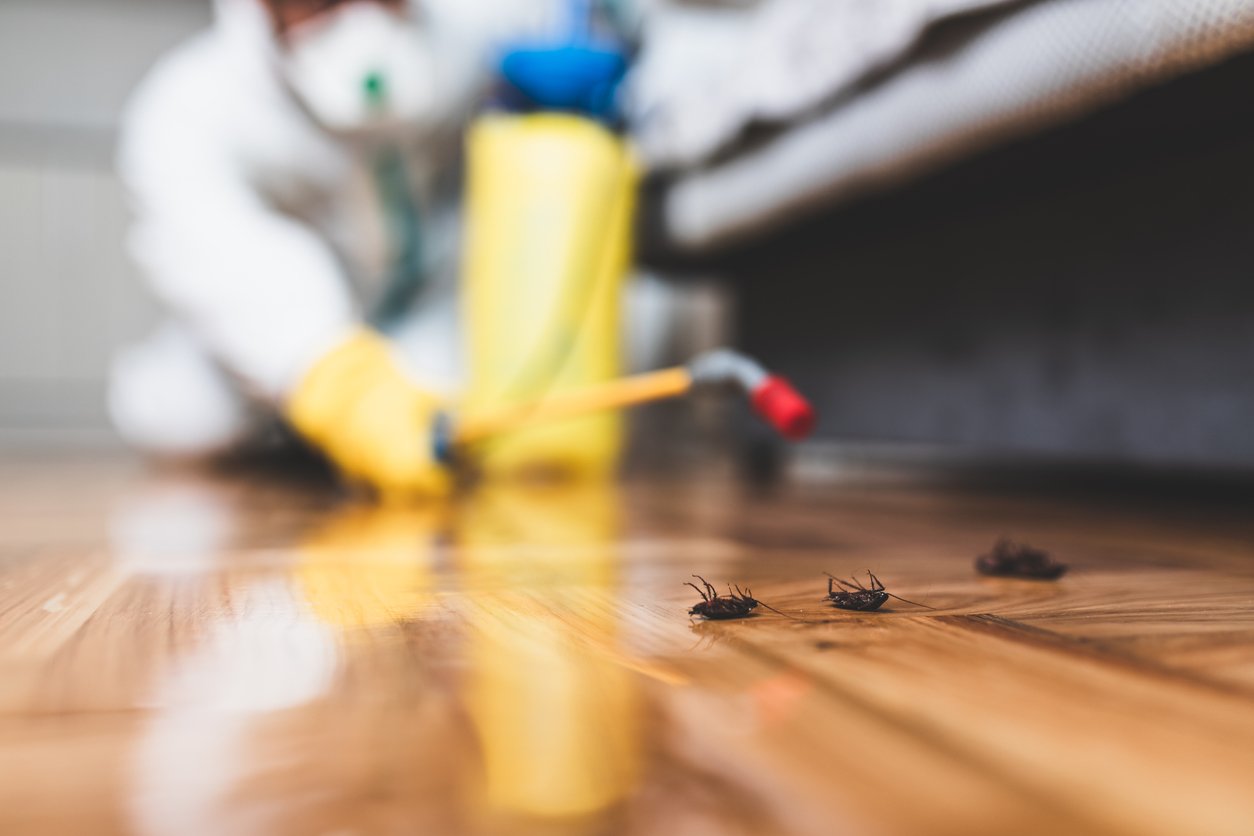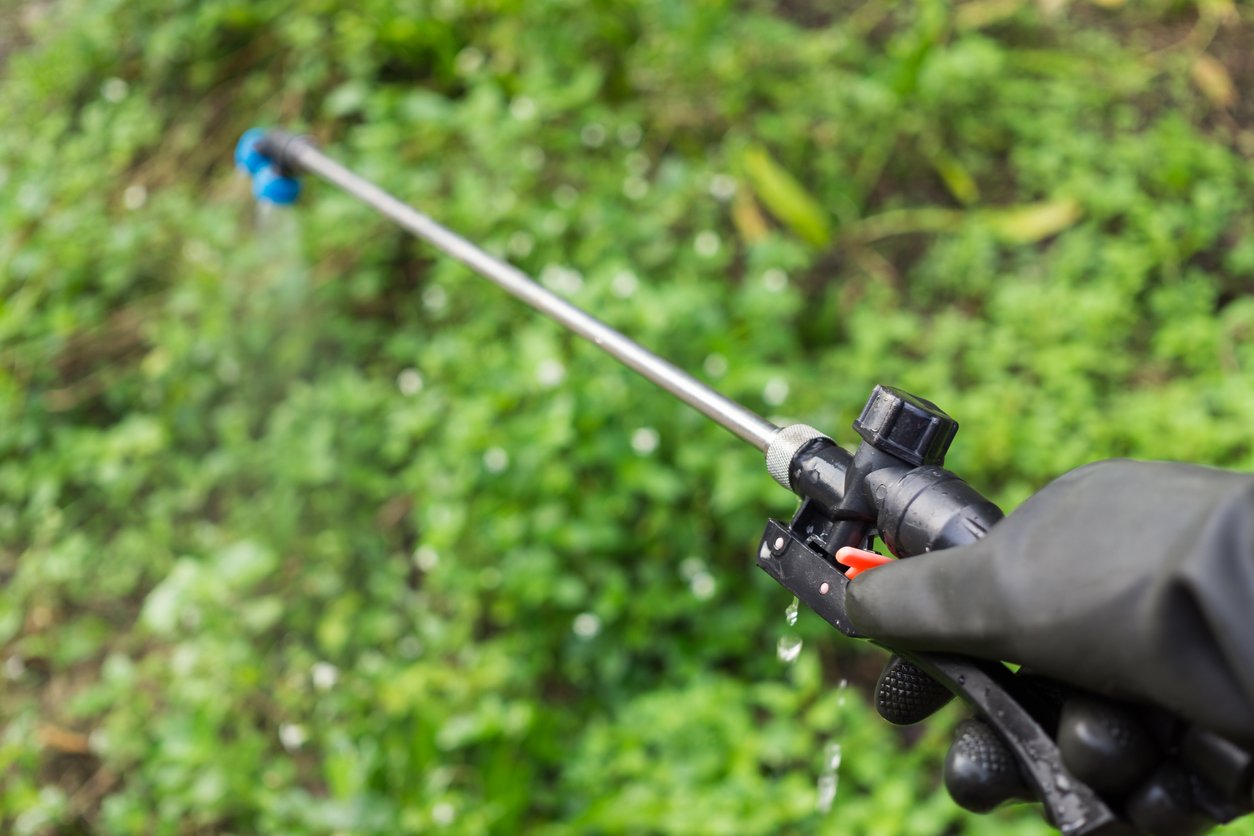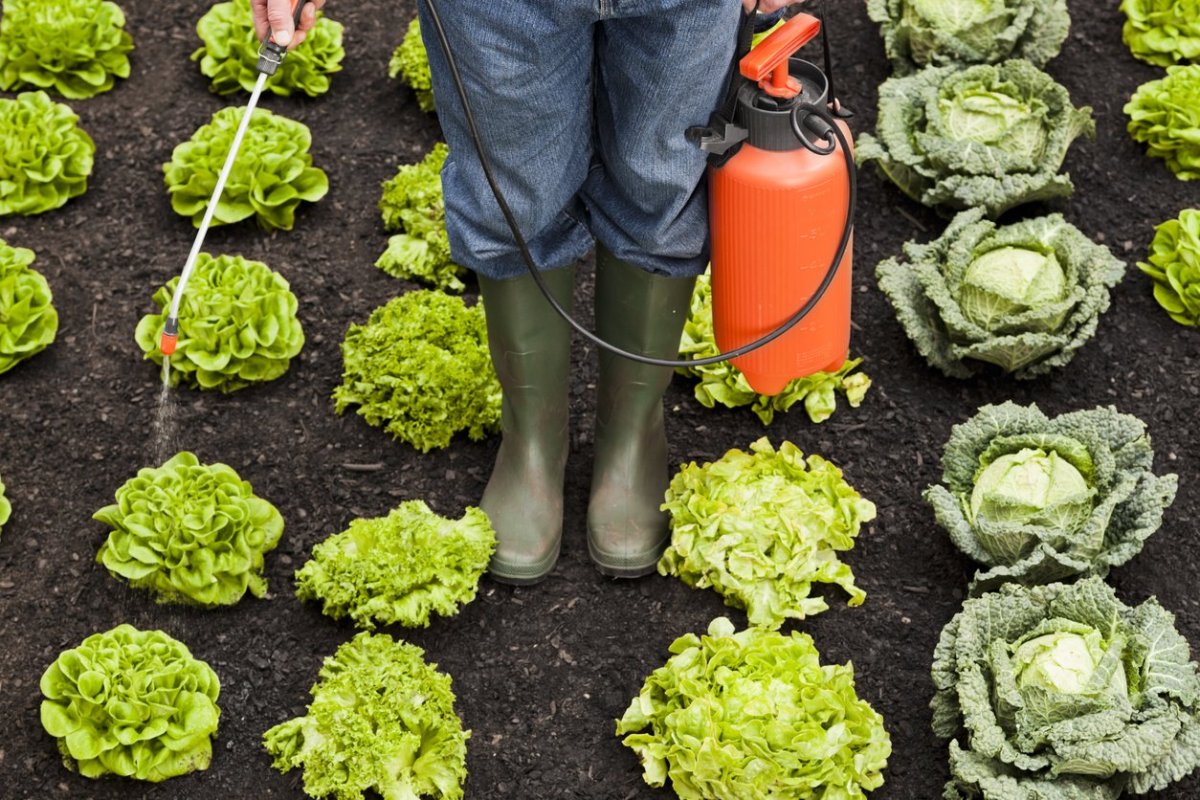We may earn revenue from the products available on this page and participate in affiliate programs. Learn More ›
The much-anticipated arrival of spring also brings a plethora of insects. Some, like ladybugs and honeybees, are beneficial to your garden. Others, sadly, not so much. From the tomato hornworms that ravage your prized plants to scale sucking the life out of your key lime, platoons of destructive pests are out there looking for a free meal. Whether you have houseplants, a veggie patch, a flower garden, or a little bit of everything, keep in mind that healthy plants aren’t easy prey—the proper watering, fertilizing, pruning, and mulching that maintains plants’ vigor will also deter bugs. That said, some degree of insect issue is about as inevitable as a pimple on a teenager’s chin, and you may need to reach for insecticide. There are several ways to go—organic, synthetic, or a combination of both—and the key to spraying insecticide safely is knowing when and how to use it.
1. Understand the difference between types of insecticides.
Pesticide is an umbrella term for products that kill or repel pests, under which fall insecticides, fungicides, herbicides, miticides, and rodenticides. Insecticides are designed to specifically bump off bugs, and there are two general types: contact and systemic.
- Depending on the type and directions for use, contact insecticide—often targeted at ants and wasps—may be sprayed on insects, applied directly to plants, or put on such exterior surfaces as fences, siding, shutters, and eaves. The major downside to contact sprays is that they’re not selective; they’ll not only kill uninvited guests, but bees, butterflies, and other beneficial insects.
- Systemic insecticides are sprayed directly on foliage to be absorbed and carried throughout the vascular system of the plant. Sucking insects like aphids, mealybugs, and scale feed on the plant and die when the chemical is ingested.

2. Decide if an insecticide is absolutely necessary before spraying.
Every insect situation differs in terms of severity and location. Anything that can’t be addressed manually, as in removal with your fingers or a firm spray from the garden hose, may require more muscle in the form of insecticide. In that way, In most, you might call insecticide an extreme last resort for situations of urgency or large infestation. Cockroaches or ants swarming all over the kitchen constitute an infestation in need of immediate attention. A paper wasp nest on your children’s swing set certainly demands action, whereas a tree branch with overwintering masses of tent caterpillar eggs simply calls for removing the limb.
RELATED: 8 Ways to Combat Garden Pests
Light infestations that commonly affect houseplants are easily controlled without insecticide. To banish spider mites, for instance, simply send them down the drain by rinsing off the plant in your bathroom shower. A Q-tip dipped in rubbing alcohol and applied individually to mealy bugs desiccates the exoskeleton, killing on contact.
3. Choose the right insecticide.
To pick your poison, first identify the offender(s)—what kind of insects are you dealing with? Knowing the enemy is critical to selecting an insecticide. All labels clearly state what the product targets. Some sprays may only treat one or two types of insects, while others attack a host of pests.
Then consider the location of the infestation—and which family members will be in the potential spray zone. Is the issue indoors or out? Is the insecticide safe to use around pets, children, and food? Read labels carefully and choose what’s specific to the problem. (A flea product for outdoor use on turf won’t help if the infestation is in the living room carpet or on the dog.)
Finally, consider the formula, and what you’ll be most comfortable using. Is it a contact or systemic insecticide? Is it ready-to-use or does it require mixing? If you’re a “green” gardener who prefers a solution derived from organic ingredients, read labels carefully. A commercially produced organic insecticide may still contain chemicals. Organic insecticides that only target one or two species do less damage to beneficial bugs and tend to be safer all around if their ingredients are derived from the likes of garlic and rosemary. In fact, if you do a little research into the bugs you’re battling, you may be able to DIY your own natural insecticide from ingredients in your kitchen cupboard.
4. Spray insecticide at the right time of year.
Timing is everything when it comes to insecticide. Some insects respond to insecticides during specific life cycle stages. For example, the lesser peach tree bore is only treatable when the moth is in its egg-laying stage (sometime between early June and mid-August); a contact insecticide applied to trees at any other time would be ineffective. Read labels to pinpoint the best times for use.
Wind and rain may also be a factor—and could lead to unintended casualties. Avoid spraying insecticide before a rainfall to prevent chemicals from leaching through the soil and into the water table, where it can enter creeks and streams, poisoning fish and other wildlife. An overcast, calm day is the best time to address outdoor insects.

5. Don’t overdo, and take precautions.
Remember that insecticides, be they chemical or organic, are toxic. The objective is to use them sparingly—only when necessary and just enough to successfully control the infestation. You must prevent them from contaminating other areas (like your neighbor’s yard), sewers, and water sources.
Wear proper protective clothing, including goggles and nonabsorbent gloves, when spraying insecticide. Residue absorbed through the skin can cause itching, pain, swelling, redness, and blistering. If insecticide gets in the eyes, immediately flush them with water and call Poison Control to determine the next step of treatment. In the best-case scenario, your eyes will burn and feel irritated after flushing for up to 20 minutes.
If you’re unsure how a plant will react to a product, test it on a single leaf for 24 hours (or for the duration recommended on the label) before a full application. Note that more than one dose may be needed; wait the recommended amount of time to treat between applications.
6. Store and dispose of insecticides safely.
Store insecticides in their original containers with labels that clearly identify ingredients and directions for application. All insecticides, organic and chemical, must be kept where little hands (and paws) can’t reach them. Insecticides must also be kept separate from food.
Follow label recommendations for safe insecticide disposal. Never pour unused insecticide into sinks, drains, or toilets where they can contaminate waterways and wreak havoc on fish and wildlife. According to the Environmental Protection Agency, most municipal drinking water and wastewater treatment plants are unable to eliminate all pesticides. When in doubt, call your local government to find out if they have a household hazardous waste collection program.

